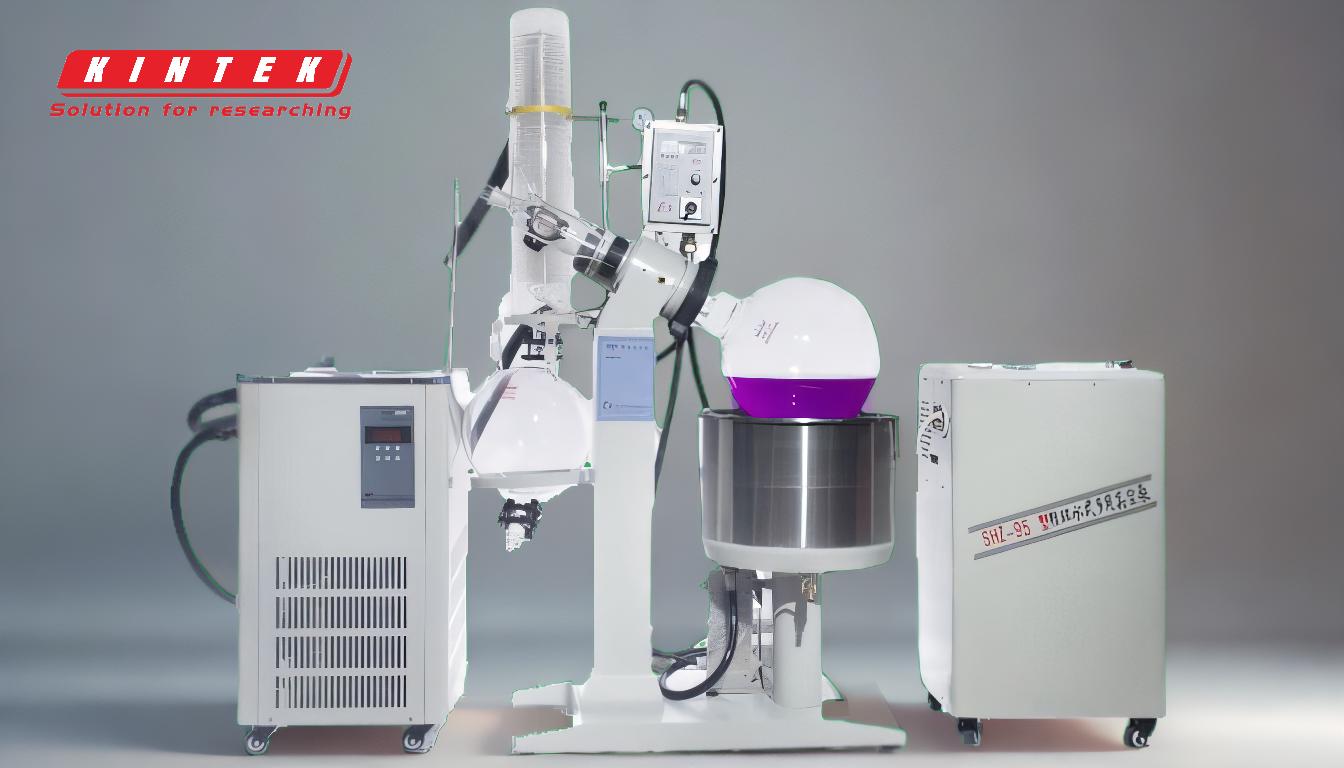Yes, the product can be lost in a rotary evaporator due to several factors, including improper operation, equipment overload, and safety hazards. Overloading the condenser by increasing the evaporation rate (e.g., lowering the vacuum or raising the water bath temperature) can cause volatile components like ethanol vapor to bypass the condenser and enter the vacuum pump, leading to product loss. Additionally, thermal decomposition of sensitive compounds, such as cannabis extracts, can occur if the water bath temperature is not adequately controlled. Safety hazards, such as implosions, explosions, or entanglement with rotating parts, can also result in product loss or contamination. Proper operation, adherence to safety protocols, and the use of appropriate equipment (e.g., a chiller for temperature control or explosion-proof glass for flammable solvents) are critical to minimizing product loss.
Key Points Explained:

-
Overloading the Condenser:
- Increasing the evaporation rate by lowering the vacuum or raising the water bath temperature can overload the condenser. This causes volatile components (e.g., ethanol vapor) to pass through the condenser and enter the vacuum pump, leading to product loss.
- Example: Ethanol vapor escaping into the vacuum pump reduces the efficiency of the distillation process and damages equipment.
-
Thermal Decomposition:
- Sensitive compounds, such as cannabis extracts, are prone to thermal decomposition at higher temperatures. Using a chiller to maintain lower water bath temperatures is essential to preserve the integrity of the product.
- Example: Failure to control the water bath temperature can degrade the product, resulting in loss of desired compounds.
-
Safety Hazards Leading to Product Loss:
- Implosions: Flawed or damaged glassware can implode under vacuum, causing product loss and contamination.
- Explosions: Concentrating unstable compounds or impurities can lead to explosions, especially with reactive materials like organic azides or nitro-containing compounds.
- Entanglement: Loose clothing, hair, or jewelry can get caught in rotating parts, leading to accidents that may damage equipment or spill the product.
-
Improper Venting and Solvent Recovery:
- Rapid manual venting at the end of distillation can cause explosions or product loss. Automatic venting is recommended to mitigate this risk.
- Using a secondary condensing device maximizes solvent recovery and minimizes environmental exposure, ensuring more efficient product collection.
-
Aromatic Imbalance:
- Rotary evaporation can alter the balance of aromatics in the product. While the liquid may retain a pleasant smell, the taste of the precipitate may be undesirable due to the concentration of certain compounds.
- Example: A liquid that smells amazing but tastes like water or has an offensive taste indicates an imbalance caused by the evaporation process.
-
Equipment and Operational Best Practices:
- Use explosion-proof glass components when working with flammable or explosive solvents.
- Ensure the heating medium (e.g., silicone oil) has an ignition point at least 25°C higher than the maximum operating temperature.
- Follow safety precautions to avoid entanglement with rotating parts and prevent violent reactions under vacuum.
By addressing these factors, users can minimize product loss and ensure safe, efficient operation of the rotary evaporator.
Summary Table:
| Key Factors | Impact on Product Loss | Prevention Tips |
|---|---|---|
| Overloading the Condenser | Volatile components bypass the condenser, entering the vacuum pump. | Avoid excessive evaporation rates; maintain proper vacuum and water bath temperature. |
| Thermal Decomposition | Sensitive compounds degrade at high temperatures. | Use a chiller for precise temperature control. |
| Safety Hazards (Implosions, Explosions, Entanglement) | Product loss or contamination due to accidents. | Use explosion-proof glass, proper venting, and avoid loose clothing or jewelry. |
| Improper Venting | Rapid manual venting can cause explosions or product loss. | Use automatic venting and secondary condensing devices. |
| Aromatic Imbalance | Altered taste or smell due to concentrated compounds. | Monitor and adjust evaporation parameters for desired outcomes. |
Ensure safe and efficient rotary evaporation—contact our experts today for tailored advice and solutions!










